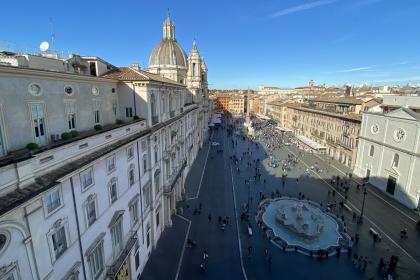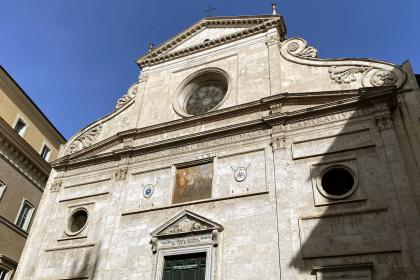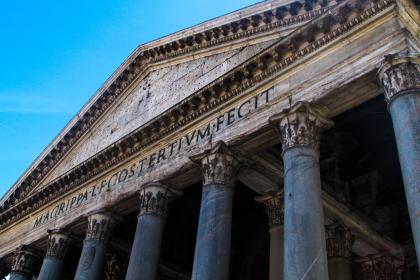
The church is located near Piazza Navona, in the Rione Parione and is one of the five French-speaking Catholic churches in Rome, together with San Luigi dei Francesi, the church of the Trinità dei Monti, Sant'Ivo dei Bretoni and Santi Claudio e Andrea dei Borgognoni.
We have news of a community of Lorraine as early as the 14th century; they worked for the Roman Curia by drafting and sending bulls and short papal papers. In 1508 the community was formed into a Confraternity placed under the protection of San Nicola and Santa Caterina. Later the Pope Gregorio XV (1621-23) granted the church of San Nicola in Agone to the brotherhood. This was then restored several times and was rebuilt according to the project of the French architect François du Jardin: begun in 1635, it was completed in 1636 and dedicated to San Nicola dei Lorenesi.
The austere façade of the building has two orders; in the centre opens the entrance portal with two empty niches on the sides, while in the upper part we find a central window. The marbles that cover the façade come from Domitian’s stadium.
The interior has a rectangular plan with a vaulted roof and two side chapels. The internal covering of polychrome marbles is the work of Giovanni Andrea Volponi and Giuseppe Maria Bay (1748). Behind the main altar, a trompe-l'oeil simulates a circular apse and another adorns the dome. The vault and dome are frescoed by Corrado Giaquinto (1703-1765).
For the jubilee of 1750 Giaquinto also painted the two altarpieces, San Nicola and the officers of Constantine, and San Nicola calming the storm. There are also many stuccos and some paintings by François Nicolas de Bar (or "Nicolò Lorense") and other Lorraine landscape painters of the period. Of particular interest are the stucco reliefs by Giovanni Battista Grossi from the second half of the 18th century.
Navona Square

 Condividi
Condividi
The most iconic square of Baroque Rome
The Basilica of Sant’Agostino in Campo Marzio

 Condividi
Condividi
The Pantheon

 Condividi
Condividi
Information
For the timetable of the masses and visiting conditions, please consult the contacts.
 Condividi
Condividi
Location
To find out about all accessibility services, visit the Rome accessible section.











































